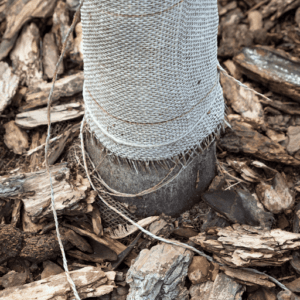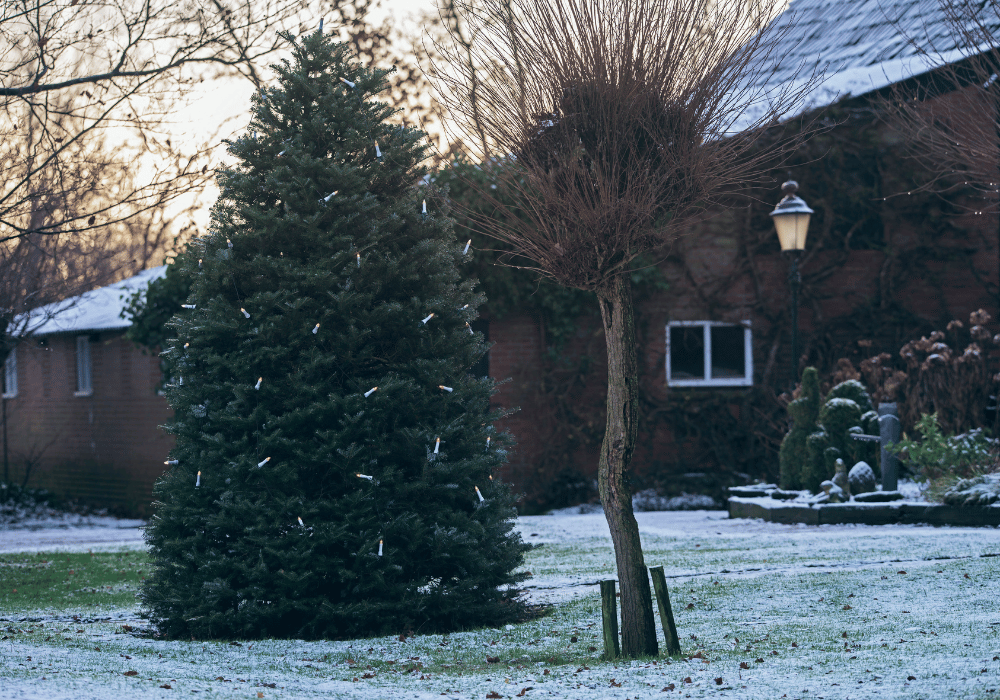Happy New Year! Let’s start the year off right with proper tree care and maintenance of during winter in Southern Maryland. While trees naturally prepare themselves for colder temperatures, skilled professionals can play a critical role in ensuring their health and resilience through the harsh winter months. This blog provides essential tips and best practices for winter tree care, highlighting the importance of tasks such as pruning, watering, and mulching. By following these guidelines, homeowners and garden enthusiasts can help their trees not only survive but also thrive during and after the winter season.
Pruning:
Proper pruning before the onset of winter is crucial. It helps remove dead or unhealthy branches, reducing the risk of damage from snow and ice accumulation. Pruning should be done in late fall or early winter when trees become dormant. This is because trees internalize most of their energy and nutrients during this period, minimizing the impact on their growth. Additionally, professional arborists can identify and safely remove branches that pose a risk but are not visibly diseased or dead, further safeguarding the tree’s health and structure.
Mulching:
Applying mulch around the base of trees helps to insulate their roots, protecting them from frost and maintaining soil moisture. Ensure that the mulch doesn’t touch the tree trunk directly to avoid attracting rodents that may damage the bark. Additionally, using organic mulches like wood chips or bark can enrich the soil with nutrients as they decompose, further enhancing the tree’s growth environment.
Watering:
Despite the dormant state, trees still require adequate hydration during winter to prevent winter burn. This is particularly important for evergreens, as they can suffer from dehydration, leading to brown or yellow patches on the needles.
Protection Against Cold and Pests: Young or vulnerable trees may need extra protection such as burlap wrapping to shield them from harsh winds and cold temperatures. Additionally, banding trees in the fall and winter can prevent worm infestations.
Root Care:
Providing trees with a deep root feeding before the onset of winter can be beneficial. This involves supplying nutrients to support their endurance against winter elements. Furthermore, this root feeding can help stimulate root growth during the dormant season, laying a strong foundation for robust growth in the spring.
Dealing with Snow and Ice:
After severe snowstorms, inspect your trees for damage like broken branches or leaning trunks. Snow accumulation can be heavy and lead to structural damage. It’s also important to gently remove snow from branches to alleviate weight and prevent breakage, especially in young or frail trees. Additionally, covering smaller or more delicate trees with burlap or specialized tree wraps and braces can offer extra protection against heavy snow and ice buildup.
Salt Damage Prevention:
Be cautious with the use of salt for de-icing near trees, as it can harm their roots. Salt damage typically manifests as leaf scorch, browning leaves, and branch dieback. To mitigate this risk, consider using salt alternatives like calcium chloride or sand, which are less harmful to plant life and still effective in managing ice.

For personalized and effective winter tree care, consider enlisting a professional arborist who can create a tailored plan addressing the unique needs of your trees, including services like strategic pruning, root feeding and installing proper tree cover or bracing where needed. Remember, the right care varies between tree species, and proper maintenance is key to their health and vigor in the spring. Ready to ensure the best care for your trees this winter? Contact a local arborist today for expert guidance and support.


